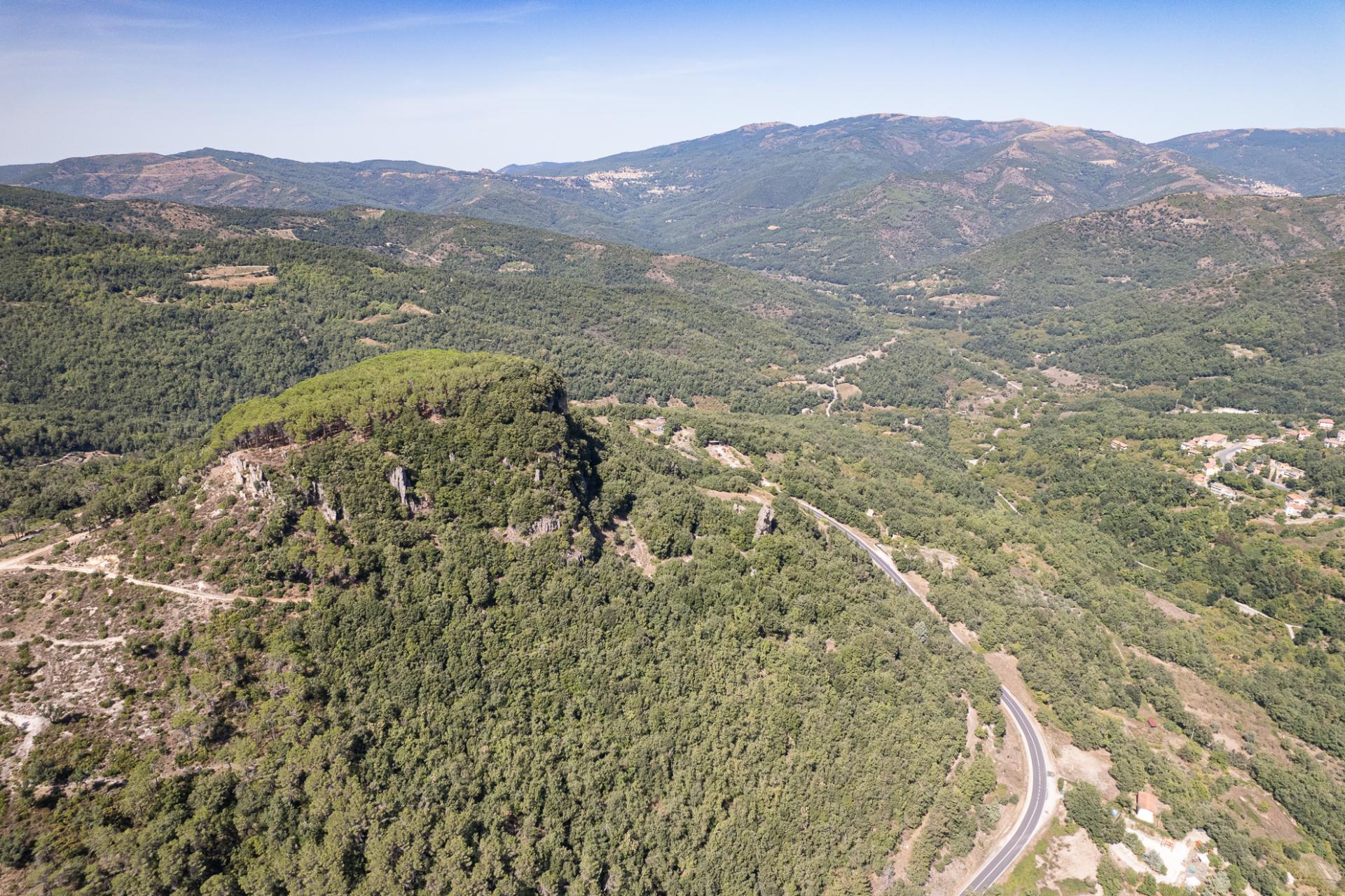Access
From the inhabited centre of Belvì, the excursion begins by reaching the square in front of the church and from here take Via Marconi, where you descend slightly downhill, then turning right along a country lane into the countryside, indicated by a wooden signpost that points the way to some domus de Janas. You continue downhill, embraced by thick hazel tree groves that clutter the small road. This was once an important cart-track, as indicated by the ancient paving and the care with which the dry-stone walls bordering it were built.
Uphill
You lose altitude until you reach a bridge that crosses a noisy stream, in the map as Riu Salasi. Looming over the area are the walls of Pitzu 'e Pranu, the destination of the itinerary, while to the right is the beautiful arched bridge of the railway along which the Trenino verde (The little green train) now travels. Having crossed the bridge, you keep to the right at the next fork and begin to climb rapidly between the various fenced allotments that occupy the valley. The cart-track is still very evident, albeit slightly more ruined: at the top of the climb you come out on asphalt, on the SP 61 bis. Here the cart track continued, but is now overgrown by brambles.
Towards the summit
You then turn left, travelling about 200 metres downhill on the main road and finding a dirt road that turns right, uphill, immediately meeting a fork with a wider dirt road where you turn right. You are now at altitude, skirting the walls of Pitzu 'e Pranu in a counter-clockwise direction. The road is flanked by some large wooden poles and has been built precisely on the geological discontinuity between the limestone that makes up the mountain above and the schists of the ancient basement on which one has walked so far. You flank some allotments and soon reach a crossroads with a paved road, where you take a left, uphill, surrounded by Holm oak forest. At the next hairpin bend, not far from the road, is a beautiful lime kiln, used for processing limestone.
Pitzu ‘and Pranu
A final uphill stretch leads to a windswept, very scenic saddle, where there is a large crossroads. Here, one turns left, uphill, entering the reforestation that occupies the summit of Pitzu 'e Pranu and on which an adventure park, now disused, was built. Vetta del taccu (limestone formation), as its name suggests, is occupied by a vast plateau where small depressions betray the presence of several chasms, attributable to the karstic nature of the area. At the highest point, you reach a Virgin Mary, statue located on the edge of the walls. Here one literally overlooks the village and the neighbouring village of Aritzo, letting one's gaze wander as far as the Gennargentu and the wide surrounding valleys. You return to the village along the path followed on the outward journey.

